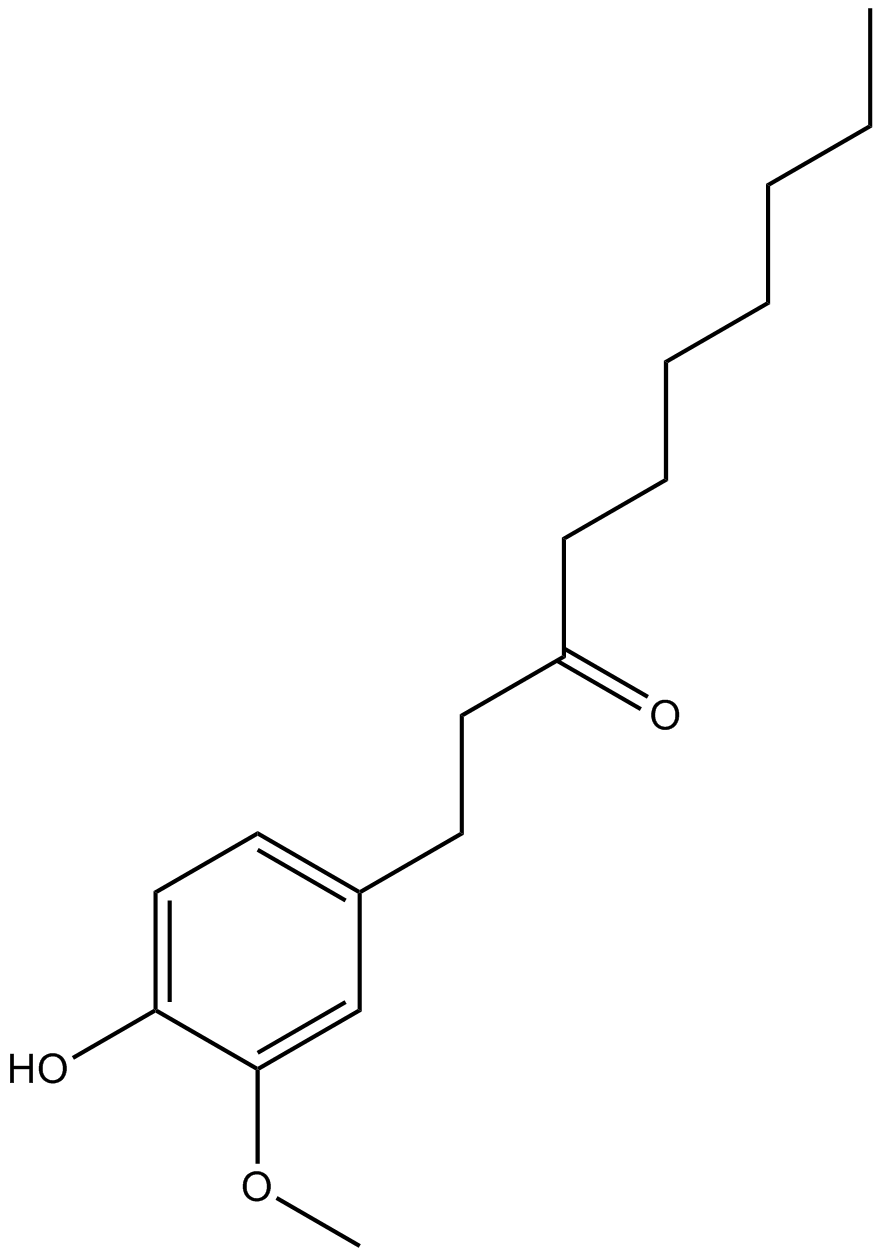Paradol |
| Katalog-Nr.GC14849 |
A phenolic ketone with diverse biological activities
Products are for research use only. Not for human use. We do not sell to patients.

Cas No.: 27113-22-0
Sample solution is provided at 25 µL, 10mM.
Paradol is a pungent phenolic substance found in ginger and other Zingiberaceae plants. Paradol is an effective inhibitor of tumor promotion in mouse skin carcinogenesis, binds to cyclooxygenase (COX)-2 active site.
Paradol ([6]-paradol) induces apoptosis in an oral squamous carcinoma cell line, KB, in a dose-dependent manner. Paradol induces apoptosis through a caspase-3-dependent mechanism[2].
Administration of Paradol (6-paradol) (10 mg/kg) clearly reduces the number of Iba1-positive cells 1 and 3 days after the challenge. Moreover, Paradol dramatically reduces the number of Iba1-postive cells in periischemic regions even after 3 days following M/R challenge[3]. Paradol (6-paradol) exhibits the strongest anti-inflammatory effect of several paradol compounds in lipopolysaccharide-stimulated BV2 microglia derived from a mouse brain, including 2-, 4-, 6-, 8-, and 10-paradol. Furthermore, Paradol shows the strongest pungency of all of the known paradol analogues. Paradol also shows the highest contact time at the antiobesity site of action on the basis of the results shown for the absorption of the metabolites in this study[4].
References:
[1]. van Breemen RB, et al. Cyclooxygenase-2 inhibitors in ginger (Zingiber officinale). Fitoterapia. 2011 Jan;82(1):38-43.
[2]. Keum YS, et al. Induction of apoptosis and caspase-3 activation by chemopreventive [6]-paradol and structurally related compounds in KB cells. Cancer Lett. 2002 Mar 8;177(1):41-7.
[3]. Gaire BP, et al. Neuroprotective effect of 6-paradol in focal cerebral ischemia involves the attenuation of neuroinflammatory responses in activated microglia. PLoS One. 2015 Mar 19;10(3):e0120203.
[4]. Setoguchi S, et al. Pharmacokinetics of Paradol Analogues Orally Administered to Rats. J Agric Food Chem. 2016 Mar 9;64(9):1932-7.
Average Rating: 5 (Based on Reviews and 30 reference(s) in Google Scholar.)
GLPBIO products are for RESEARCH USE ONLY. Please make sure your review or question is research based.
Required fields are marked with *




















